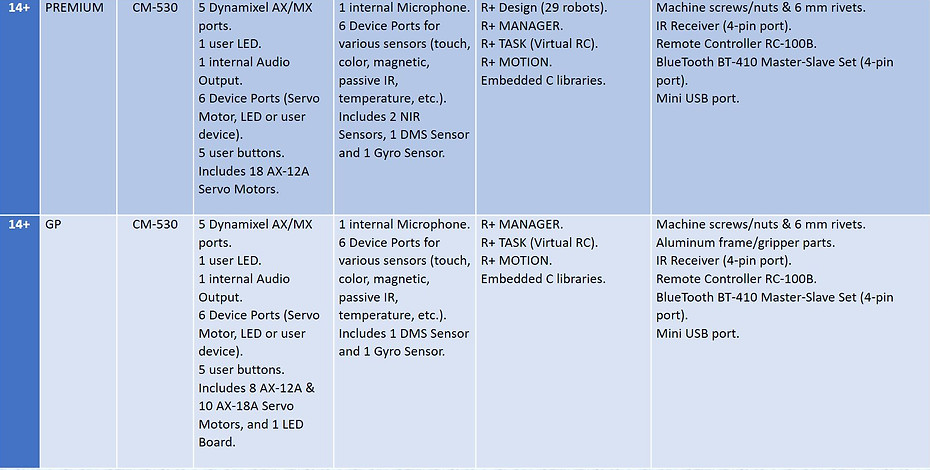CHOOSING AN APPROPRIATE ROBOTIS KIT
By C. N. Thai
If you are a newcomer to ROBOTIS systems, you may be overwhelmed by the different robot series available, thus the motivation for this article.
From my experiences in using and teaching with ROBOTIS systems for students in secondary schools and at university undergraduate levels, I would propose that new users consider two main criteria in choosing an appropriate robot kit corresponding to their current abilities and needs:
User’s robot construction skills.
Currently, ROBOTIS offers three ways to put their robots together:
-
“12 mm rivets” - 12 mm being the distance between adjacent rivet hole centers. The actual rivet’s diameter is 7 mm, and it uses a single-part design targeted at the youngest users (8+). The PLAY 600 and 700 kits belong to this product line.
-
“6 mm rivets” – again 6 mm being the distance between adjacent rivet hole centers. The actual rivet’s diameter is 3.5 mm, and it uses a 2-component design with an outer sleeve and a stem-rivet. This fastening approach requires more manual dexterity and is designed for mid-teens (10+). The PLAY 300, DREAM, SMART, MINI and IoT kits belong to this product line.
-
The third fastening approach uses small standard screws and nuts and is designed for 12+ years old users. The STEM, BIOLOID PREMIUM and GP kits belong to this product line. The professional-grade systems such as the OP, THORMANG and Turtle Bot 3 kits also use this fastening method.


User’s Budget.
-
At the lowest budget range (less than $100), we have the PLAY 300, 600 and 700 kits.
-
For a mid-range budget (between $100 and $500), we have the DREAM, SMART, IoT, MINI and STEM kits (Note: currently the SMART and IoT kits are only available in South Korea).
-
For the high-end budget ($500+), we have the BIOLOID PREMIUM, GP, OP and Turtle Bot 3 (TB3) kits.
The following chart lists the main features/criteria to help potential ROBOTIS users select their starter and continuing robotics systems.




A video version of this procedure is also available here.
